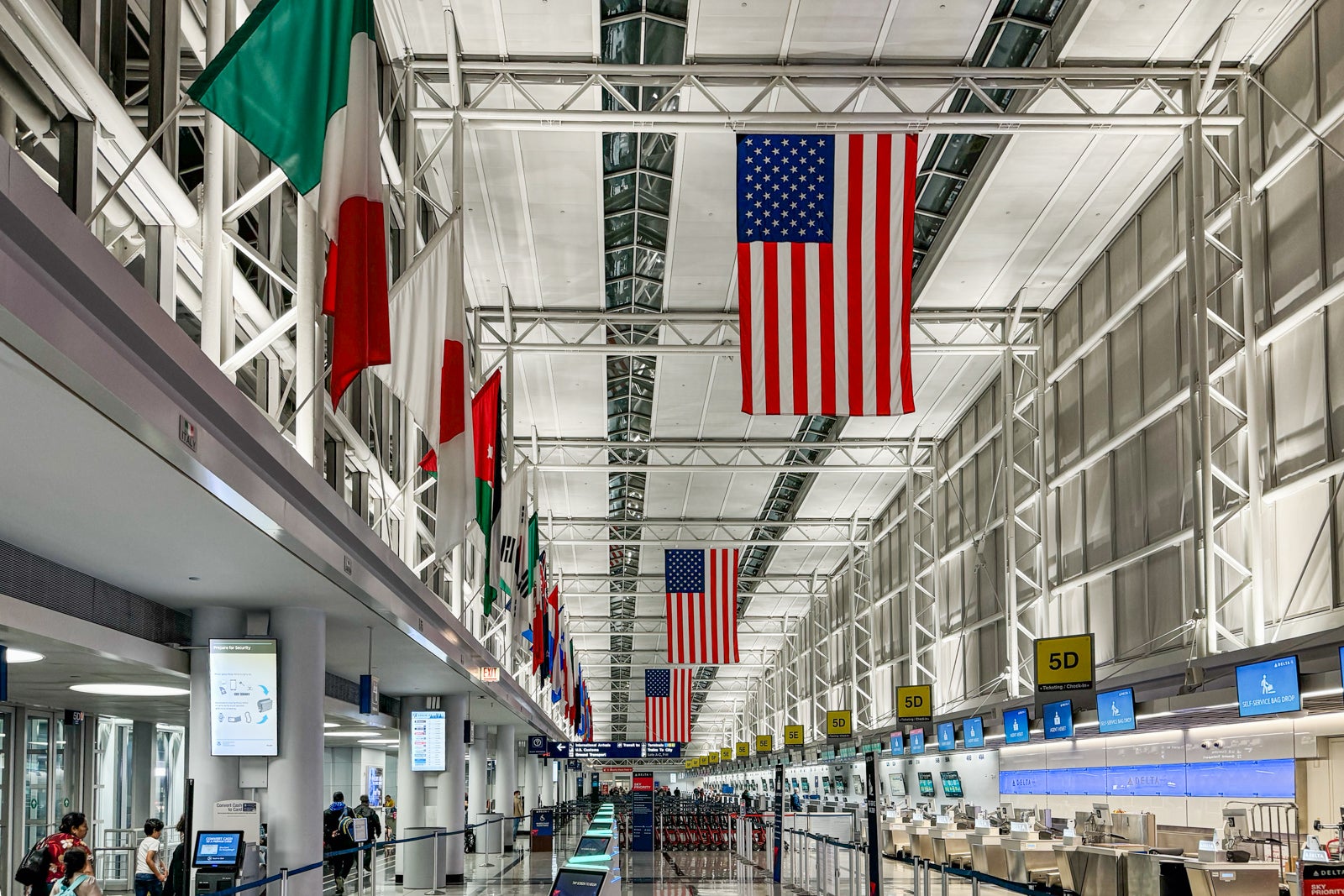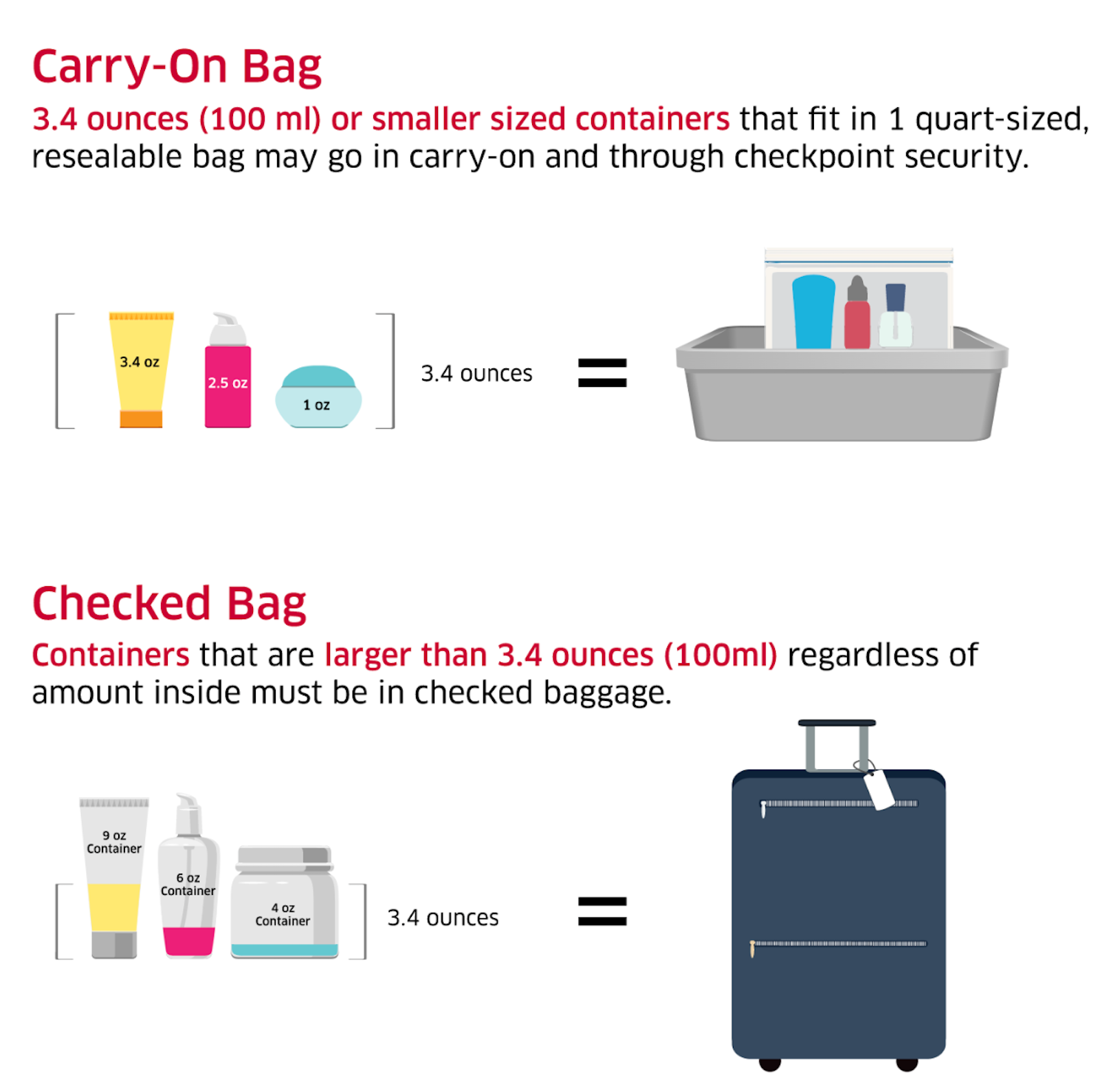We’ve all been there: You’re waiting in the Transportation Security Administration line, only to hear agents call for a “bag check.”
Oftentimes, it’s because a traveler has a liquid product in their carry-on that exceeds the allowed limit.
The ensuing process can slow things down, particularly on the busiest travel days. Agents typically have to inspect the bag, determine what the prohibited item is and allow the traveler to decide whether to discard the item or take it back to their car.
But what exactly are the TSA liquid rules, and why do they exist? And, most important, what does this mean for packing ahead of your next trip?
Here’s a quick rundown.
TSA liquids rules: Why do they exist?
The TSA’s restrictions on liquids date back to 2006 when a thwarted terrorism plot overseas prompted the agency to limit large quantities of liquids, gels and aerosols in carry-on bags.
Scores of other countries around the world took similar steps in the name of aviation security. You’ll find comparable rules as you travel internationally — though the U.K. is moving toward removing these restrictions.
What is the TSA 3-1-1 rule?
The TSA’s ban on liquids — or at least large quantities of them — is governed by what’s known as the “3-1-1 rule.”
The decades-old policy states that:

Daily Newsletter
Reward your inbox with the TPG Daily newsletter
Join over 700,000 readers for breaking news, in-depth guides and exclusive deals from TPG’s experts
- Liquids must be in containers no larger than 3.4 ounces, or roughly 100 milliliters (that’s the “3”).
- All containers must be placed in one clear, quart-size plastic bag (“1”).
- Each passenger is only allowed one such plastic bag (“1”).
These rules govern liquids, gels and aerosol products ranging from toothpaste to shampoo, conditioner, mouthwash and sunscreen — among other products.
Liquid products larger than 3.4 ounces must be placed in a checked bag. That even applies to those large shampoo containers with just a tiny bit of shampoo left, per TSA policy.
Exceptions to the TSA’s 3-1-1 policy
There are a few exceptions, though.
The TSA will allow you to bring “medically necessary” liquids, gels and aerosols “in reasonable quantities” for your flight. However, you must declare those items to security officers at the checkpoint for inspection.
The agency asks travelers with larger amounts of medically necessary liquids to remove them from the carry-on bag and place them in a bin or bowl. The TSA has a variety of alternative screening methods it can use.
What can you bring through a TSA checkpoint?
You can bring creamy cheeses, liquid chocolate, liquid coffee, creamy dips and spreads, gravy, honey, hummus, ice cream, jam, jelly, juice, syrup, peanut butter, salad dressing, sauce, salsa, soda, soup, and yogurt as long as they are in a container of less than 3.4 ounces, according to the TSA.
You can bring your water bottle with you, even if it weighs more than 3.4 ounces — as long as it’s empty. This can also be a great way to save money at the airport since many now have post-security filling stations for reusable water bottles.
When in doubt, consult the TSA’s list of what you can carry through the airport and check with your airline.
Or, better yet, download the MyTSA app. It contains a “Can I Bring?” section, allowing you to look up items and find out whether they’re allowed outright, restricted to 3.4 ounces, permitted only in a checked bag, permitted only in a carry-on bag or prohibited altogether.
Related reading:


